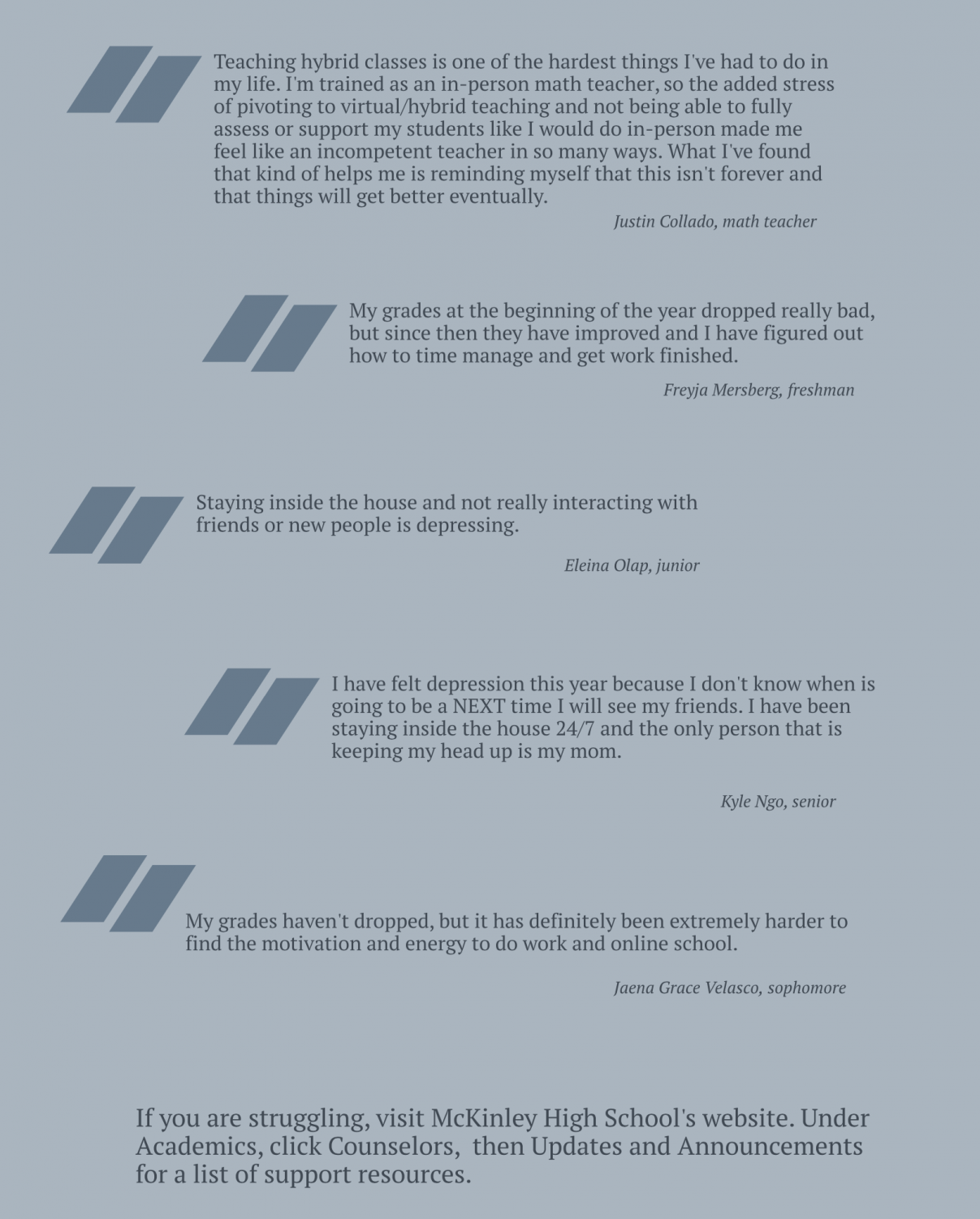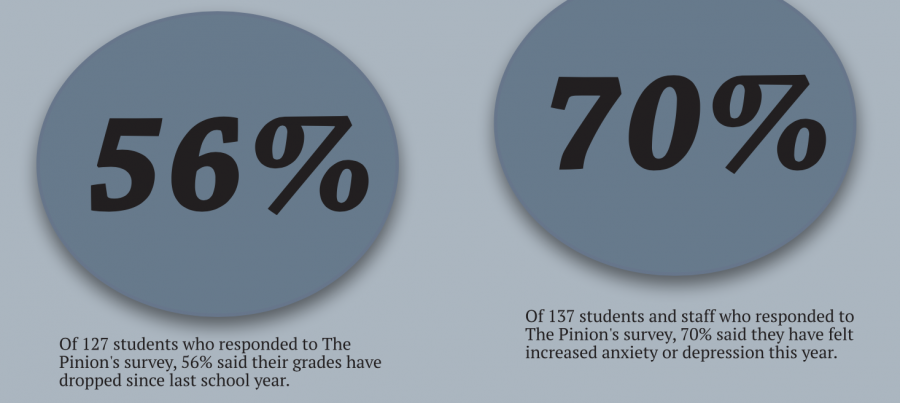Failures and anxiety increase during online learning
By staff
The Pinion surveyed students and staff in April and here are the results.
April 9, 2021
Students all over the country are continuing to fall behind as the school year nears its close. Students wanting to pass to the next grade or even grading will be very difficult.
Codon Teixeira, an Aiea High School freshman, remembers the days when school meant asking for help, staying on schedule, and communicating with friends before the bell rang. Now Teixeira struggles with communication with fellow students that could help him know what schedule he has, technical problems such as the meeting not working, or even asking what he has to do and how to understand it better.
It’s his freshman year in high school and he barely knows what any of his classmates look or sound like because almost no one turns on their cameras or mics.
“Going to school was much easier than what it is now because I used to know what to do. Now all I get is stacked assignments or I look answers up because I don’t know how to do something,” he said.
Like many students during virtual learning this year, Teixeira’s grades have suffered.
This is not only happening to Teixeira and not only in Hawaii. One school district in Charles County, Maryland, saw a 72.7% increase in failing grades for students enrolled in high school. In New Mexico, more than 40 percent of middle and high school students were failing at least one class.
For McKinley High School student Jeremiah Samuelu, classes have been more stressful than they had been before. Like most students during virtual learning, Samuelu has experienced a range of emotions since virtual learning started. He describes his emotions and feelings as depressed, angry, alone, and even difficult.
“I never used to hate school up until now. The reason for that is because everybody thinks I’m not trying and bringing me down,” he said. “I’m frustrated and confused and they still don’t care for what I have to say.”
It’s not just Samuelu. Many other students around the country feel unmotivated or down because of digital learning.
Suicide rates for students have seen an uptick nationwide. Kids such a Spencer Smith found his mostly online class schedule challenging. An 11-year-old child killed himself while in his distance learning class.
Depression and anxiety have also risen tremendously since online school started.
Jazlyn Anela, a freshman at Waipahu High School, said, “Sometimes I just give up and don’t go to class because I’m always lagging or I can’t hear anything.”
Computer difficulties have been a big problem during digital learning. Many students are not provided with a strong internet so it can be difficult to learn most of the time. Even things such as computer glitches, server shut offs and disabled meet links can trouble a lot of students. This leads many students to feel unmotivated to learn at all. Lots of times during digital learning, there are compatibility issues with systems and browsers.
Nowadays lots of students are calling online school annoying, unfair, stressful, and frustrating. How will we fix this digital learning tragedy?






